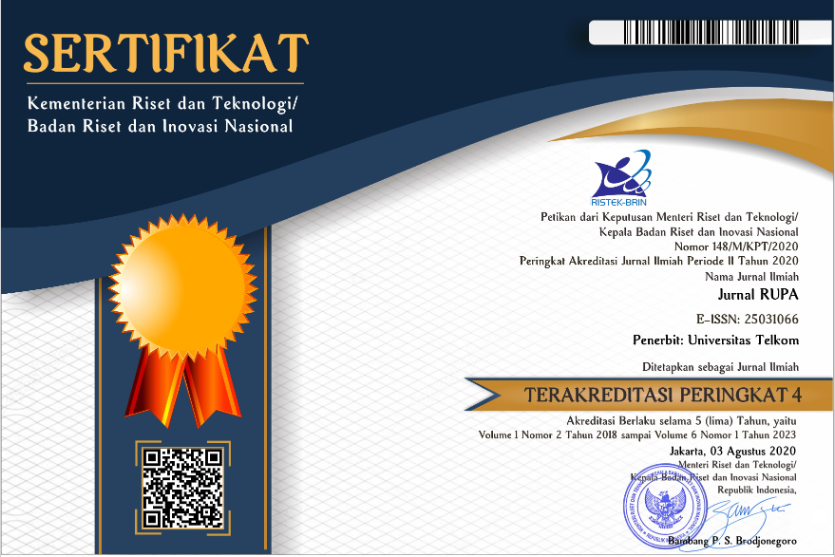Kode-kode Psikis dalam Film '27 Steps of May' (2019): Sebuah Analisis Teks
DOI:
https://doi.org/10.25124/rupa.v7i2.3983Keywords:
Kode-kode psikis, Psikoanalisis film, Semiotika, 27 Steps of MayAbstract
Film is an important medium to represent the social reality that occurs in society. This can be seen from how a film can present a portrait of reality in symbolic forms full of meaning. The symbolic forms in the film can be related to the psychoanalytic theory in the film. The psychoanalysis in the film can be attributed to the signs in the film. One of the films full of psychic codes is 27 Steps of May (2019). This film directed by Ravi Bharwani tells about the trauma of survivors of sexual violence. May (played by Raihaanun) was the victim of gang rape when she was 14 years old. Due to deep trauma, his life later turned into a life without connection, emotion and even communication. This film shows how trauma greatly affects a person's life. The purpose of this study was to determine the psychic meaning of the codes in the film 27 Steps of May. The method used is a text analysis method with a structural semiotic approach. Semiotics is used to reveal the connotative meaning hidden behind the media text as a whole. The semiotics used is Roland Barthes' semiotics model. The results of this study are in the form of a description of the psychic codes in the film and how the body language and codes of the actors are related to psychological expressions. The results of this study were May, who hallucinated a hole in the wall inside her bedroom. This refers to the gestures and body language that are displayed in the scene as well as the psychic condition of May who is a schizophrenic, where she cannot understand the world around her normally because she is hallucinating.







